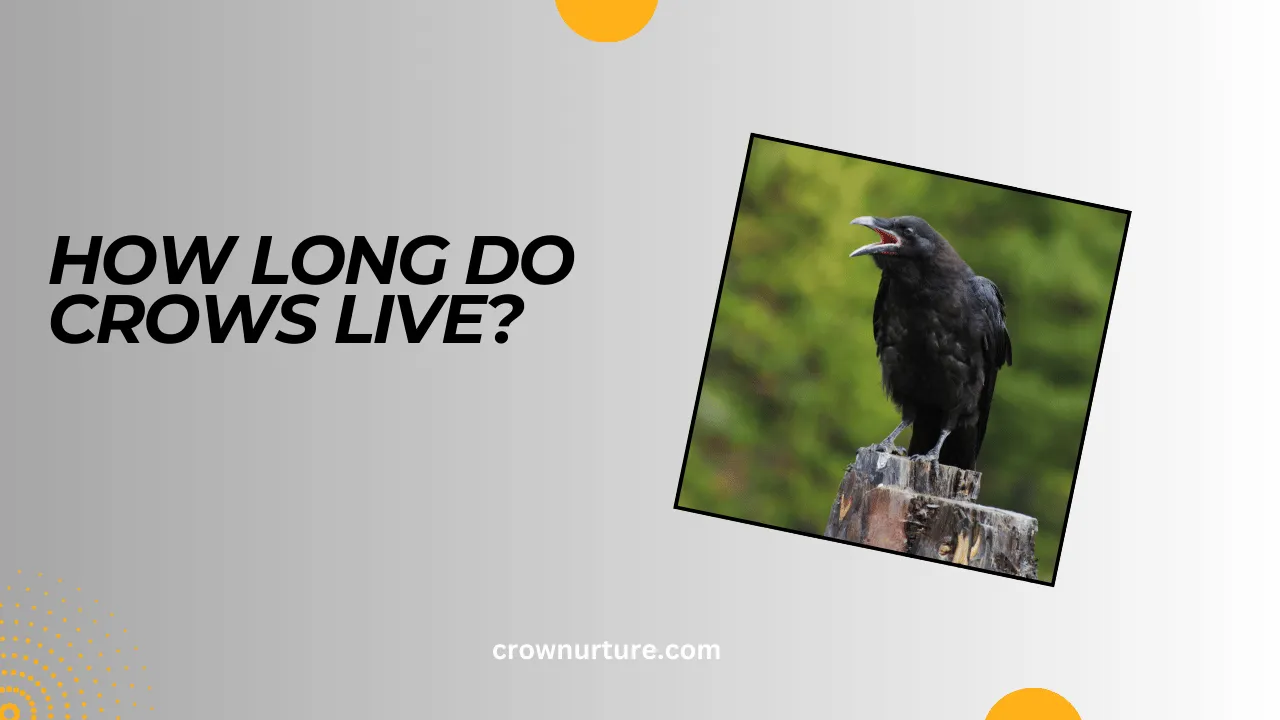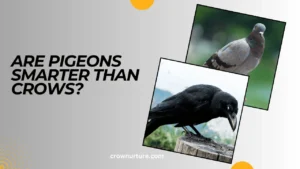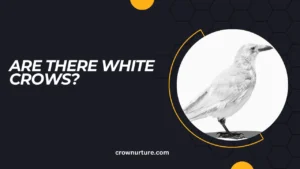Crows are far more than the noisy, black-feathered birds many people associate with spooky folklore or busy cityscapes. They are intelligent, adaptable, and highly social creatures, thriving in environments as diverse as dense forests, sprawling farmland, and bustling urban areas.
While most of us see crows as common sights, their lifespans hide a fascinating story that connects their unique abilities to their survival. The average wild crow lives 7-8 years, but this is not the whole story.
Under the right conditions, crows can live much longer, with some individuals surpassing 20 years in age. This exceptional longevity stems from their intelligence, adaptability, and ability to navigate the dangers of their environment.
The lifespan of a crow is influenced by several factors, including food availability, predators, diseases, and human activity. Understanding how long crows live reveals much about their role in nature and the impact of human behavior on wildlife.
Whether you’re a bird enthusiast or just curious about these clever creatures, diving deeper into their lifespan and survival strategies opens a window into the hidden complexity of their lives.
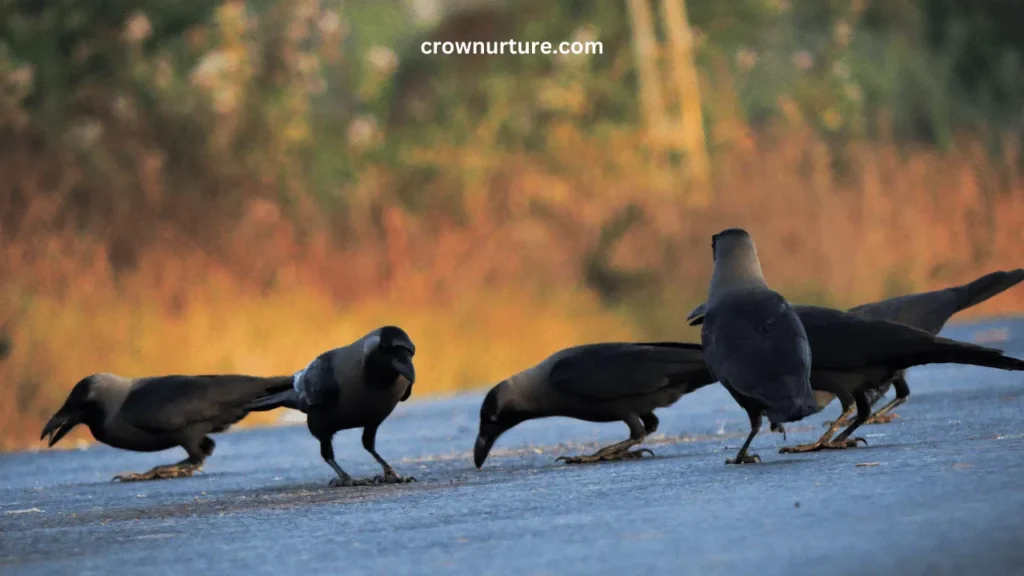
Contents
1. Factors Influencing Crow Lifespan
- Predation:
Crows face threats from predators like hawks, owls, raccoons, and even domestic animals. Nestlings and juveniles are especially vulnerable, while adult crows are adept at avoiding predators through their intelligence and group defense tactics, such as mobbing. - Disease and Parasites:
Like many animals, crows are susceptible to diseases such as the West Nile Virus, which has caused significant declines in some populations. Parasites, including mites and lice, can weaken their immune systems and reduce their overall lifespan. - Food Availability:
A consistent and nutritious food supply is critical for a crow’s survival. In urban areas, crows benefit from abundant human-provided food, but in the wild, seasonal food shortages can lead to malnutrition and starvation, especially in harsh winters. - Habitat Quality:
The availability of suitable nesting sites and foraging areas directly impacts crow longevity. Urban development and deforestation reduce high-quality habitats, forcing crows to adapt or relocate. - Human Impact:
While crows are adaptable, human activities such as road traffic, poisoning, and pollution significantly contribute to crow mortality. Collisions with vehicles are particularly common in urban settings where food sources often bring them close to roads.
2. Longevity Records
- Documented Cases of Longevity:
While most wild crows live under a decade, there are remarkable cases of crows living up to 29 years in captivity. These cases highlight the potential for extended life spans when threats like predators and disease are minimized. - Why Some Crows Live Longer:
Exceptional longevity in crows is often linked to safe environments, where access to abundant food and minimal threats allow them to thrive. Social learning, where younger crows learn survival techniques from older ones, also plays a role. - Differences Between Wild and Captive Crows:
Wild crows face constant dangers, from natural predators to environmental challenges. In contrast, captive crows benefit from consistent care, leading to significantly longer lifespans. This disparity underscores the challenges of survival in the wild.
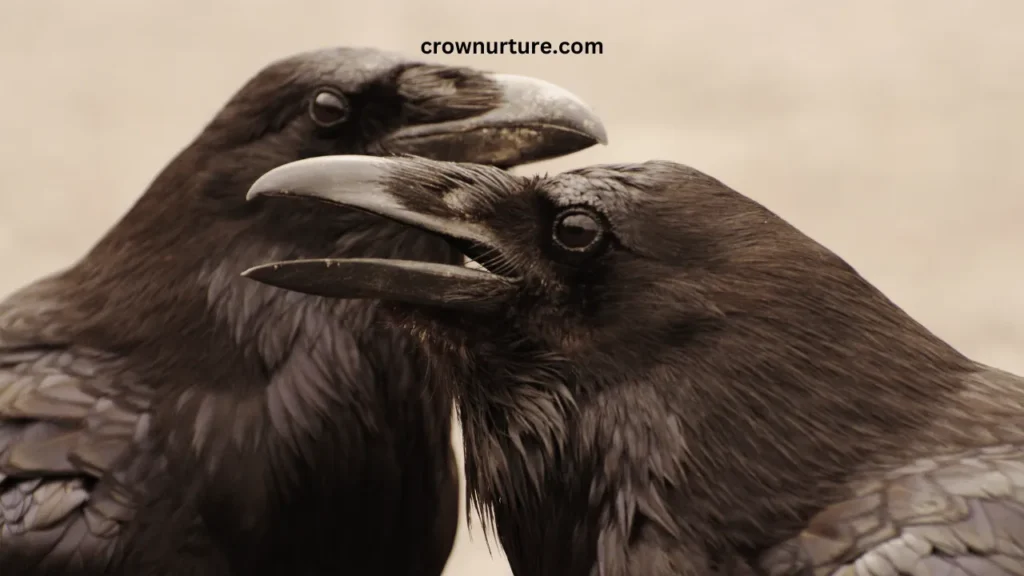
3. Crow Intelligence and Adaptability
- Problem-Solving Skills:
Crows are renowned for their exceptional intelligence, which includes the ability to use tools, solve puzzles, and remember human faces. These cognitive skills help them navigate threats and find innovative solutions to survival challenges. - Urban Adaptability:
Urban areas provide both opportunities and risks for crows. Their ability to adapt to human environments, from using trash as a food source to learning traffic patterns, demonstrates their resilience. - How Intelligence Extends Lifespan:
Intelligence allows crows to adapt to changing conditions, avoid predators, and exploit new food sources. This adaptability is a significant factor in their ability to live longer in varied environments.
4. Conservation and Implications
- The Need for Conservation:
Despite their adaptability, crows face threats from habitat destruction, pollution, and human conflicts. Efforts to conserve crows include protecting their habitats, reducing harmful human impacts, and promoting coexistence. - Shifting Public Perception:
Many people see crows as pests, but educating the public about their ecological importance and intelligence can help shift these perceptions. Crows play vital roles in ecosystems, such as pest control and seed dispersal. - Scientific Importance:
Studying crows provides insights into avian intelligence, behavior, and survival strategies, which can inform broader conservation efforts for other bird species.
5. Why Crows Matter
- Ecosystem Benefits:
Crows are essential for maintaining ecological balance. By controlling insect and small animal populations, dispersing seeds, and scavenging carrion, they contribute to healthy ecosystems. - Cultural Significance:
Throughout history, crows have appeared in myths and folklore, often symbolizing wisdom, mystery, or transformation. Their presence in human culture reflects their close relationship with people. - Environmental Indicators:
Because crows adapt to diverse environments, they act as indicators of ecosystem health. Changes in crow populations can signal broader environmental shifts, such as habitat degradation or pollution.
Conclusion
Crows are remarkable birds with lifespans that range from 7-8 years in the wild to over 20 years in ideal conditions. Their survival depends on a delicate balance of factors, including access to food, habitat quality, and the presence of predators or diseases.
Their intelligence and adaptability play a significant role in navigating these challenges, allowing them to thrive in diverse environments, including urban areas.
By understanding the lifespan of crows, we gain deeper insights into their ecological importance and adaptability. Their role in ecosystems goes beyond mere survival—they help control pests, clean up carrion, and even serve as cultural symbols.
Protecting crows and their habitats not only benefits them but also enhances the health and balance of our ecosystems.
Ultimately, crows remind us of the interconnectedness of nature and the importance of respecting all life forms, no matter how common they may seem. Appreciating these intelligent birds is a step toward fostering a deeper connection with the natural world.
FAQs
1. How long do crows typically live?
Crows generally live 7-8 years in the wild, but some have been recorded living over 20 years, especially in captivity or ideal environments.
2. What is the main cause of death for crows?
Crows often die from predation, disease, accidents (like vehicle collisions), and human-related activities such as habitat destruction.
3. Are crows more likely to live longer in urban areas?
Urban environments offer consistent food sources and fewer predators, which can extend crow lifespans. However, they face risks like traffic and pollution.
4. Can a crow recognize and remember humans?
Yes, crows can recognize and remember human faces, often identifying those who pose threats or provide food.
5. Do crows form lifelong bonds?
Crows are highly social and often form strong bonds with mates, raising their young cooperatively.
6. Why do crows gather in large groups?
Crows roost in large groups for warmth, safety from predators, and social interaction, especially during winter months.

